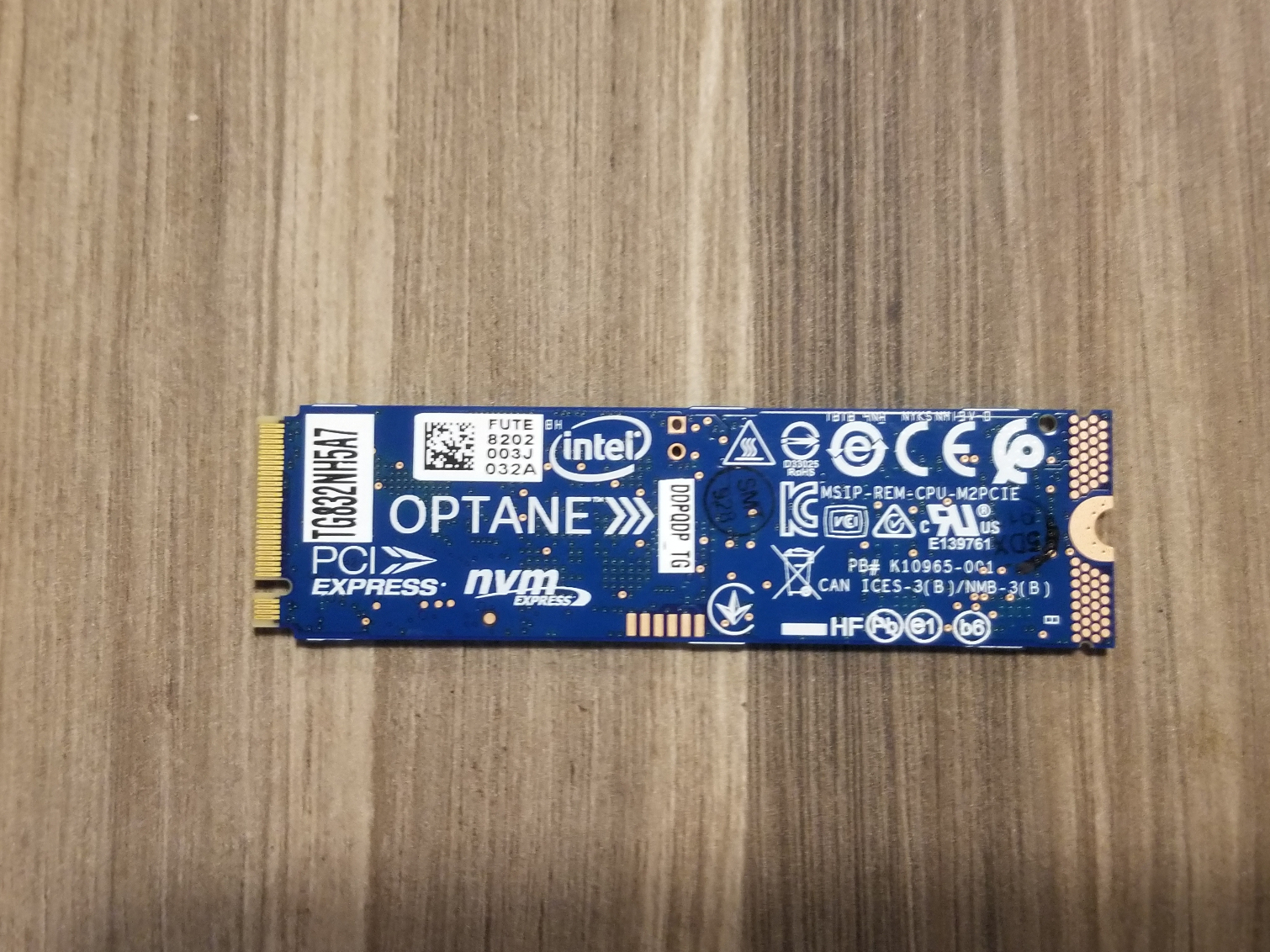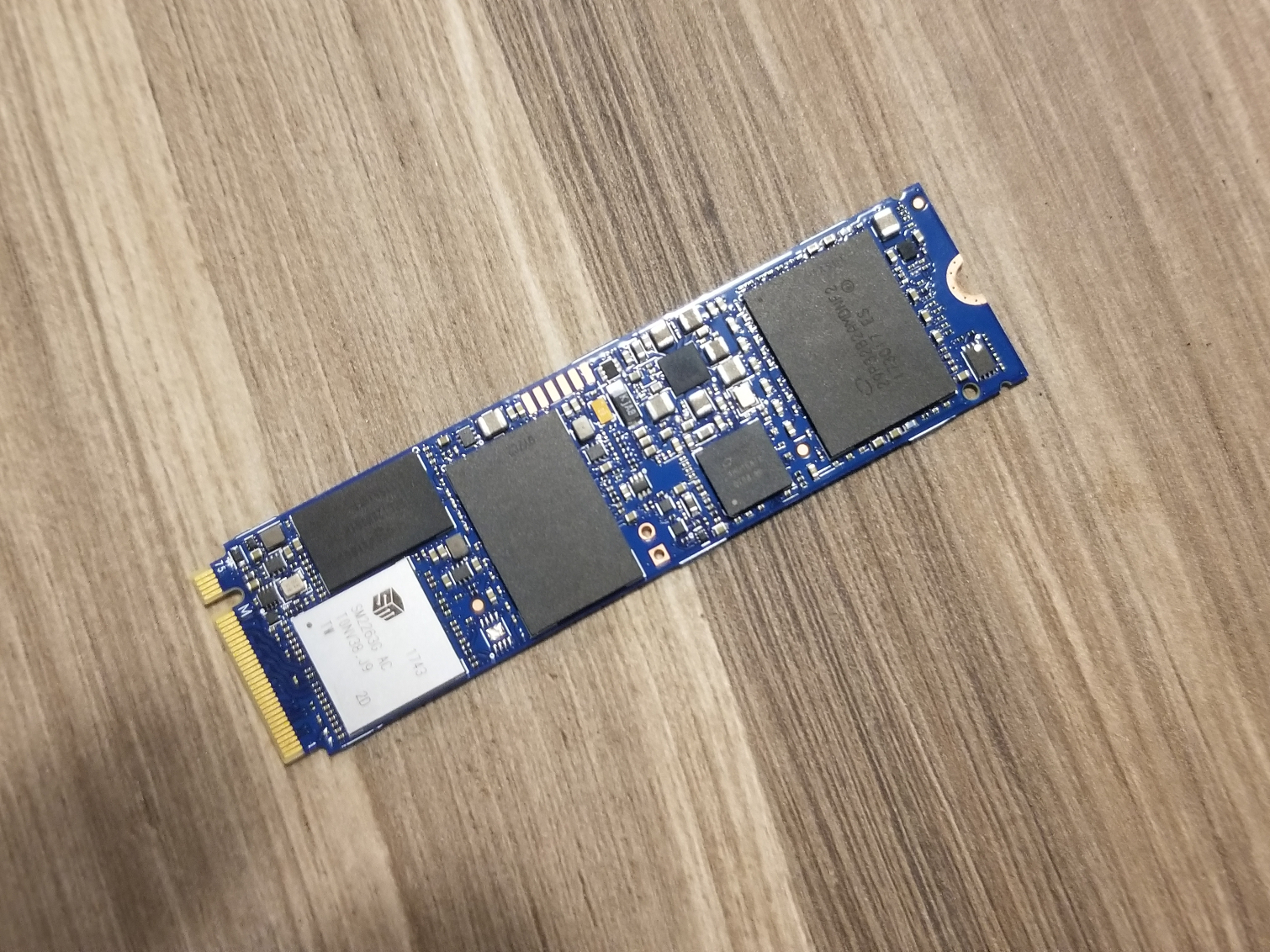Intel's New M.2 Optane Memory H10 SSDs: Optane Paired With QLC Flash (Updated)
Update 1/19/2019 7:00pm PT: We learned more at Intel's official unveiling of the new Optane Memory H10 SSDs. We've updated the article below.
Intel's speedy Optane storage products just received a face-lift. The new Optane Memory H10 model boosts overall storage capacity by pairing the speedy 3D XPoint memory with a dollop of QLC flash. That means there will soon be Optane-powered SSDs that reach up to 1TB of capacity.
As you can see in the image above, the M.2 SSD features both a QLC flash and an Optane memory package on a single PCB. The new drives use the fast Optane storage to accelerate frequently-accessed data held on the more spacious QLC flash, meaning these M.2 drives will come in one slim package with higher capacities than the previous-gen M.2 Intel SSD 800p.
The 800p SSDs only come in capacities of 58GB and 118GB and are significantly more expensive than typical flash-based SSDs. Intel's new H10 drives will still command a premium due to the pricey Optane memory, but the less-expensive QLC flash means you get much more storage capacity for your dollar.
| Row 0 - Cell 0 | Optane SSD 800p | Optane Memory H10 (QLC - Optane) |
| Capacity | 58 / 118 GB | 1TB - 32GB / 512GB - 32GB / 256GB - 16GB |
The new Optane Memory H10 drives include two models with either 1TB or 512GB of QLC flash paired with 32GB of Optane memory. Intel also has a low-capacity model that combines 256GB of QLC storage with 16GB of Optane memory.



The H10 is essentially an 32GB Optane memory caching drive and an Intel 660p QLC SSD crammed onto a single board. As such, the drive has a custom Intel controller for the Optane memory and a separate SMI controller for the QLC flash.
Each controller has its own PCIe 3.0 x2 pathway into the M.2 socket, and Intel's RST (Rapid Storage Technology) combines the two drives together. As a result, the drive is limited to the speed of a single PCIe 3.0 x2 connection. That will limit performance for large transfers, but you retain the speed and latency of Optane during random workloads.
Get Tom's Hardware's best news and in-depth reviews, straight to your inbox.
The Optane memory is transparent to the operating system, so the drives only expose the QLC flash portion of the SSD to the user. As such, a drive with 1TB of QLC flash and 32GB of Optane memory appears as a 1TB drive.
Most enthusiasts use the smaller Optane SSD 800p drives to hold their operating system while storing bulk data, like games, pictures, and videos, on a secondary drive. That tactic isn't as effective in the notebook space, largely because most lightweight devices don't come with connections for a secondary drive.
The new drives will certainly open up new opportunities for notebook users, and for Intel. The new drives will debut in Q2 in OEM systems from Dell, Lenovo, HP, Acer, Asus, and others. Intel is leading with drives for several OEM laptops, which will come to market in Q2 2019, but hasn't committed to bringing retail models to shelves. The H10 requires a motherboard that supports PCIe bifurcation, which means motherboard vendors would have to commit to releasing new BIOS revisions that support the feature.
Intel hasn't released performance specifications. QLC SSDs tend to be pretty snappy, but regular Optane drives are faster. Overall performance of the combined drives will not be as impressive as a "pure" Optane SSD, but intelligent caching should make the drive faster than flash-based SSDs.
Intel hasn't released specifics, but the Optane Memory H10 SSDs have a higher endurance rating than a standard QLC SSD and are backed by a five-year warranty.

Paul Alcorn is the Editor-in-Chief for Tom's Hardware US. He also writes news and reviews on CPUs, storage, and enterprise hardware.
-
Giroro QLC? Gross.Reply
I feel bad for the engineers who spent over a decade developing a revolutionary fast and durable new storage technology, only to see it utterly wasted on caching the cheapest, slowest, least reliable flash memory ever mass produced.
I hate the SSD industry's race to the bottom. Especially since exciting developments in speed and longevity like Optane are doomed to die on the vine as companies increase production on drives with shorter warranties than physical-wear and tear spinning disks. -
William_X89 Agreeing with Giroro on this one, wasting good tech on sub-par flash memory. I won't go lower than TLC.Reply -
DavidC1 @GiroroReply
I like Optane, but you have to be realistic here. It's very high priced. The market doesn't accept it because of it. Besides, faster storage benefits far less people than faster CPU. SSDs are already considered pricey by mainstream standards, and you think Optane adoption should be quick? Slower computer is a frivolous issue.
Some reports say Intel isn't merely being greedy with Optane. They said the production costs are high enough they have to price it that high. -
owhansson They could be on to something here. If they get their caching algorithms right, this could be a winner when it comes to the average consumer. Our moms and dads and non-techy friends would get a better UX. I wonder how having dual controllers will affect price, though. And does the Optane do write caching? That would be where the increase in durability comes from. Overall, I think caching with Optane, if done right, could make QLC much more viable.Reply
But it also seems to me Intel has a hard time getting their 3D Xpoint memory sold and thus are trying to find more uses for it. Let's hope this is not just that. -
stdragon Reply21659872 said:They could be on to something here. If they get their caching algorithms right, this could be a winner when it comes to the average consumer. Our moms and dads and non-techy friends would get a better UX. I wonder how having dual controllers will affect price, though. And does the Optane do write caching? That would be where the increase in durability comes from. Overall, I think caching with Optane, if done right, could make QLC much more viable.
But it also seems to me Intel has a hard time getting their 3D Xpoint memory sold and thus are trying to find more uses for it. Let's hope this is not just that.
With QLC, it's sacrificing IOPS for storage density. It definitely becomes more apparent as IO (PCIe lanes and speed) expands with future standards. So from that aspect, it's kinda necessary to break the SSD into two or more layers of cache. The problem I have with it is the increase in complexity that's inherently more prone to errors and HW faults down the road. Yes yes, do backups and all that, but still.
Question is - will this become the 'new normal' for "prosumer" market as well? Or, is this prosumer with average new SSD storage being all QLC? -
bigdragon Reply
Let's not forget the vendor lock-in problem. If Optane were available on AMD or ARM I think it would have much better adoption rates. Price is only part of the problem here. Reducing the quality of Optane parts and dropping prices don't fix ecosystem limitations. I don't think Intel knows who the customers for Optane are anymore.21658868 said:@Giroro
I like Optane, but you have to be realistic here. It's very high priced. The market doesn't accept it because of it -
Brian_R170 Reply21658707 said:Agreeing with Giroro on this one, wasting good tech on sub-par flash memory. I won't go lower than TLC.
Don't you think the same thing that happened with SLC and MLC will happen with TLC in the near future? -
Brian_R170 Reply21660824 said:Let's not forget the vendor lock-in problem. If Optane were available on AMD or ARM I think it would have much better adoption rates. Price is only part of the problem here. Reducing the quality of Optane parts and dropping prices don't fix ecosystem limitations. I don't think Intel knows who the customers for Optane are anymore.
Only the Optane cache modules are restricted to Intel systems with RST (which isn't entirely accurate since you can find articles and videos where people used Optane cache modules with AMD StoreMI). The Optane SSDs like the 800p/900p/905p work like a regular SSD, so they have no such limitation.

